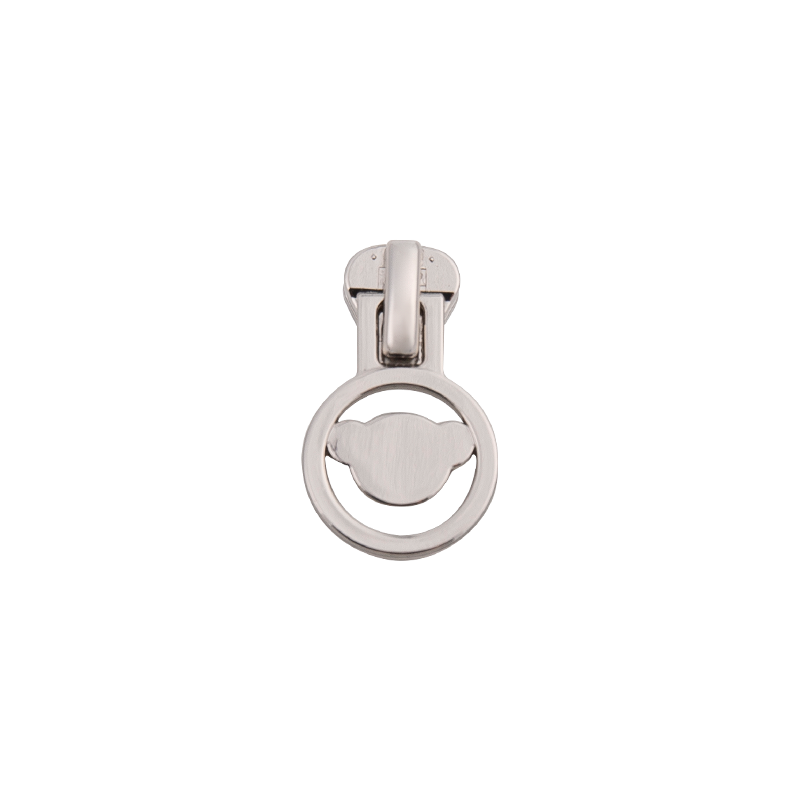Delrin Zipper Slider needs to be optimized in different application scenarios according to the frequency of use, load intensity and environmental conditions. There are significant differences in the design and performance requirements of Delrin zipper sliders for backpacks that are used frequently and clothing that is used less frequently. The following are the main differences between the two and their reasons:
Frequency of use requirements for slider performance
Backpacks that are used frequently
Higher wear resistance requirements: Backpacks are usually used for daily carrying of items, and the zipper may be opened and closed many times a day. Therefore, Delrin sliders need to have higher wear resistance and fatigue resistance to cope with frequent sliding operations.
Self-lubrication is more critical: High frequency of use may cause increased friction between the slider and the zipper teeth, so it is necessary to ensure that the slider has good self-lubrication, reduce wear and maintain smooth sliding.
Enhanced strength and durability: Backpacks may bear heavier loads, and the slider needs to be able to withstand greater tension without deformation or breakage.
Low frequency clothing
Lightweight design priority: Zippers on clothing are usually used for occasional opening and closing, and the frequency of use is low, so the slider can adopt a lighter and thinner design to reduce material costs and improve comfort.
High surface smoothness requirements: Clothing zippers pay more attention to appearance and feel, so the surface treatment of the slider needs to be more refined to ensure good visual effects and touch.
Impact resistance is relatively unimportant: Since clothing zippers usually do not bear heavy objects, the strength and impact resistance requirements of the slider are relatively low.
Impact of load strength
High load requirements of backpacks

Backpack zippers may need to withstand large tensile forces, especially when fully loaded. Therefore, Delrin sliders need to have higher mechanical strength and deformation resistance.
The design of the slider may require increased thickness or a reinforcing rib structure to increase its load-bearing capacity.
Low load requirements of clothing
Clothing zippers usually only withstand slight tensile forces caused by human body movements, so the slider can be designed to be thinner and lighter to meet the needs of lightness and comfort.
For clothing zippers, the flexibility and softness of the slider are more important so that it does not affect freedom of movement when worn.
Adaptability to environmental conditions
Diverse environments of backpacks
Backpacks may be used in various environments, such as outdoors, in rainy days, or under extreme temperature conditions. Therefore, Delrin sliders need to have better weather resistance and UV resistance to prevent aging or discoloration.
In a humid environment, the slider needs to have good moisture resistance to avoid increased sliding resistance due to moisture absorption.
Indoor environment of clothing
Clothing zippers are mainly used indoors or at room temperature, so the requirements for environmental adaptability are relatively low.
However, for some special-purpose clothing (such as outdoor sportswear), the weather resistance and waterproof performance of the slider still need to be considered.
Differences in design details
Design features of backpack sliders
Increased size: Backpack sliders are usually larger than clothing sliders to facilitate gripping and operation, especially when wearing gloves.
Strengthened structure: Improve the strength and durability of the slider by increasing the thickness or adopting a double-layer design.
Coating or modification: In order to improve wear resistance and corrosion resistance, backpack sliders may be surface coated or modified.
Design features of clothing sliders
Small and light: Clothing sliders are usually small and thin to reduce the impact on the overall weight and appearance of the clothing.
Exquisite appearance: Clothing sliders may be polished or otherwise surface treated to enhance aesthetics and feel.
Flexible structure: The design of clothing sliders focuses more on flexibility so that they can be easily opened and closed when worn.
Differences in material selection
Material requirements for backpack sliders
Backpack sliders may use higher-strength Delrin materials (such as Delrin 100 or Delrin 500) to meet the needs of high strength and high wear resistance.
Fillers (such as fiberglass or carbon fiber) may be added to increase the rigidity and impact resistance of the slider.
Material requirements for clothing sliders
Clothing sliders are usually made of standard-grade Delrin materials (such as Delrin AF) to balance performance and cost.
More emphasis is placed on material flexibility and surface smoothness to ensure a comfortable user experience.
The design and performance requirements of Delrin zipper sliders in high-frequency backpacks and low-frequency clothing are significantly different:
Backpack sliders emphasize wear resistance, strength and weather resistance, suitable for use in high-intensity and diverse environments.
Clothing sliders focus on lightweight, appearance and feel, and are more suitable for low-load and indoor environment applications.
By optimizing the design and material selection of sliders for different scenarios, it is possible to ensure that Delrin zipper sliders can perform at their best in various applications while meeting the actual needs of users.

 en
en  русский
русский 한국어
한국어 get a free quote
get a free quote
















